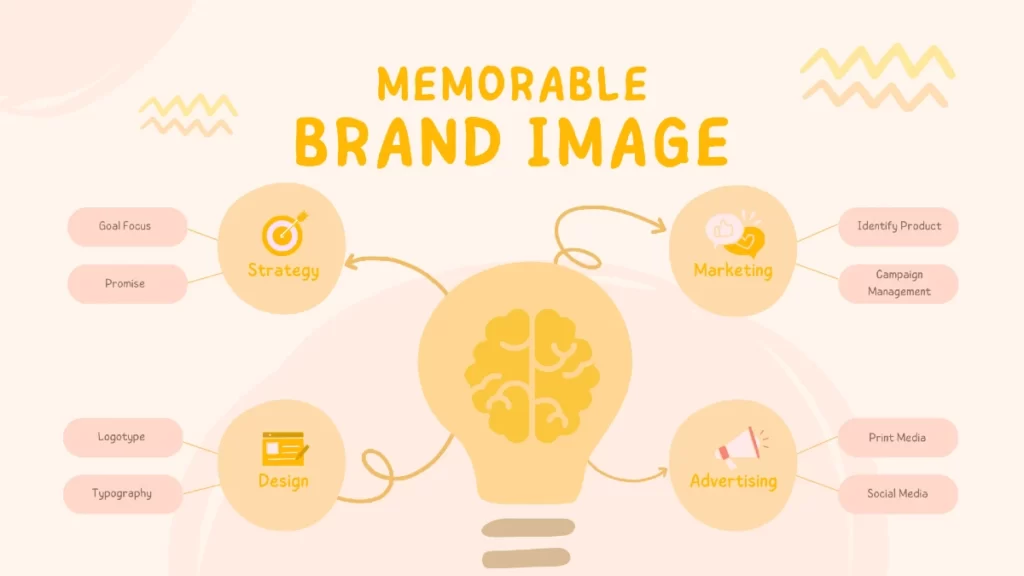The level of recognition that your brand has among consumers is defined as brand awareness. It relates to how well people know your brand, how quickly they recognize it, and how they view it. Various measures, such as social media engagement, website traffic, and consumer surveys, can be used to assess brand awareness.
A good brand awareness strategy is critical for organizations because it helps establish brand identity, builds consumer loyalty, and drives revenue. Social media marketing, content marketing, influencer collaborations, and experiential marketing are all common methods for increasing brand exposure. Businesses can separate themselves from competitors and establish a devoted consumer base by effectively raising brand awareness.
Brand awareness is an essential part of growing your business. Your brand represents what you offer and who you are, and shows customers why they should choose to do business with you. By strengthening your current presence and creating new opportunities for engagement in the marketplace, you can turn potential leads into loyal customers. This post provides practical steps to craft an effective brand awareness strategy. It will position your company as an industry leader.
1. Create a Memorable Brand Image

A solid visual identity is the foundation of an effective brand awareness strategy. It includes the logo, colors, and fonts that reflect your company’s values. Visuals convey your message in a positive light. Keep it simple and avoid busy visuals that can be distracting or confusing. Additionally, create slogans, mottos, and taglines that instantly grab attention and easily stick in viewers’ minds.
Brand image is vital for cultivating an emotional connection with your audience, so always display the same visual identity throughout your marketing materials. Consistent appearance makes your brand familiar to customers. You want to create an impression that lasts, so be sure to choose visuals and words that are unique and memorable.
Ensure your content is cohesive, engaging, and true to your company’s identity. Avoid generic visuals and content that doesn’t align with your mission, as this can be a major turnoff for potential customers. For maximum impact, lean towards visuals that are visually appealing and entertaining.
2. Engage With Your Audience

Studies have shown that brands are more likely to succeed when they base their strategy on meaningful data and insights from target customers. Building a successful brand awareness strategy involves interacting with potential customers and learning about their needs. Create profiles on social media platforms and post updates about your products and services, share relevant industry news, and promote special offers. By engaging with customers regularly, you can learn more about their challenges and needs and track what resonates most with your target audience. Additionally, encourage customers to leave reviews or comments on your posts to understand how they feel about your brand.
Growing your reach on social media also involves engaging with other influencers in your industry. Commenting, liking, and sharing their content allows you to be seen by their followers as a credible resource for useful insights, increasing your brand visibility over time. Your competitors can also be valuable sources of information. Keep an eye on their strategies and consider how you can differentiate your brand from theirs. Information gleaned from competitors can also help you identify opportunities to better serve customers.
3. Focus On Creating Relationships
Building relationships with customers and stakeholders is a crucial part of brand awareness. Nurture your customer base by providing them with helpful content, valuable resources, and reliable customer service. Respond to social media comments and answer questions in forums. This way, customers can reach out when they have queries or complaints. This will help create personalized experiences that increase sales conversions and lead generation.
Real-world examples of companies who have achieved success through focused customer relations efforts include Amazon’s Prime membership program and Starbucks’ rewards scheme. Not only do these programs reward loyal customers with exclusive offers, but they also foster an ongoing dialogue with customers that helps ensure satisfaction and continued engagement with the brand.
In addition to interacting with customers, create relationships with influencers and industry experts. These individuals can help you reach a wider audience and build trust in your brand. When establishing partnerships, respect the values of these individuals and think about what kind of content would be most beneficial for them to share.
However, remember that building relationships takes time, so be patient and persistent. You must maintain contact with partners even when it doesn’t seem like you’re gaining anything. With continued effort, these relationships can eventually become beneficial for both parties. Brand awareness seeks to create a positive perception about your business and products. Creating relationships with customers and stakeholders builds trust and loyalty for the long term.
4. Leverage Influencers
Influencer marketing is another excellent way to build a strong brand presence in the marketplace. With a few clicks and scrolls on any social media platform, you can quickly identify influencers in your industry that would be beneficial to collaborate with. After identifying potential candidates, find out if they’d like to work together.
You can negotiate to have the influencer promote your brand in exchange for monetary compensation or free products/services. Influencers with solid followings help you reach a wider audience and increase your visibility.
When working with influencers, make sure they match your brand. They should understand the image you’re trying to portray. Additionally, ensure that their values align with yours and that they have an engaging presence on social media. The influencer should genuinely be interested in your brand. The best influencers are willing to go the extra mile to meet your goals.
5. Seek Professional Help
Your brand is a delicate asset, so protecting and promoting it as best as possible is essential. Consulting with a digital marketing agency can be beneficial if you need more resources or skills to manage your brand awareness strategy independently.
You’ll be guided on how to develop a strategy that aligns with your company’s mission and values. You may also learn creative ideas to differentiate your brand from competitors. You can also have a professional review of your current materials, such as website copy and marketing collateral, to ensure you convey the right message to customers.
Before hiring a marketing agency, consider your budget, goals, and the services they provide. Do enough research and find an agency with a solid track record of successful campaigns. It should offer excellent customer service and competitive rates. With a good digital marketing agency, you can improve your brand visibility and elevate your business.
6. Take Advantage of Paid Advertising
Paid advertising can increase brand awareness. Choose platforms that are most likely to reach your target audience. Create campaigns with compelling visuals, messages, and calls-to-action. Paid ads provide more visibility than organic content and also give you greater control over who sees your message.
You can use paid ads to promote your content, build awareness of special offers, or simply increase the visibility of your brand. When creating ads, be sure to use a consistent branding message and visuals that stand out from the competition. Measure campaign performance using analytics tools so you can adjust them as needed and get the most out of your ad budget.
Paid advertising is great for reaching people who don’t already follow you on social media. Experiment with different ad formats, platforms, and targeting options to see what works best for your brand.
7. Measure Results
Your brand awareness strategy aims to increase visibility and engage with the right people. You must establish key performance indicators (KPIs) and measure how different components perform over time to track progress toward these objectives. For example, you can track website visits, social media interactions, engagement rates on content posts, or even the number of referrals to measure the performance of your brand awareness strategy. Tracking metrics offers insight into what’s working and where your efforts may be lacking.
Identify what other metrics you need to track, such as customer feedback and satisfaction ratings. Tracking helps you determine if customers are satisfied with your brand message. It can give you insight on how they perceive competitors. Additionally, tracking customer feedback can give insight into where improvements may be needed in terms of product or service offering.
You must also measure your strategy’s return on investment (ROI). This involves calculating the revenue generated from the campaigns and activities you’ve put in place to build brand awareness compared to how much was spent on them. Calculating ROI helps you determine if your efforts are yielding positive results or if they need to be adjusted.
Start by calculating the cost per impression (CPI). This metric measures the cost of each time a potential customer views your ad or message. It can help you understand the efficiency of your advertising spend and how many people are seeing your message. Brand lift is the increase in brand awareness as a result of your advertising or marketing activities. It can be measured through surveys or focus groups before and after a campaign.
8. Redefine Your Content Strategy
Create content that your target audience can appreciate. Regularly review and adjust your content to ensure it reflects the values and interests of the audience. Analyze what kind of content is performing best, which topics are generating engagement, and where there is potential for improvement.
You should also create content for different platforms and optimize it for each one. What might work on Instagram may not be appropriate for Twitter or LinkedIn, so tailor your messages to the platform you are using. Additionally, find ways to collaborate with influencers who already have a following in your industry.
Good content should also be tailored to different stages of the purchase process. Each piece should be crafted to inform, inspire, or persuade customers at various points in their journey. Keep in mind that your ultimate goal is to generate conversions and build loyalty so consider how each piece can help reach these objectives.
Conclusion
Building brand awareness requires your time, effort, and creative thinking. You must work to capture and retain the attention of your target audience. A comprehensive strategy and the right tools can help build a strong reputation for your brand. By staying up to date with industry trends, developing relationships with partners, redefining content strategies, using paid advertising platforms, and creating a distinct brand identity, you can ensure that customers recognize and remember your company.